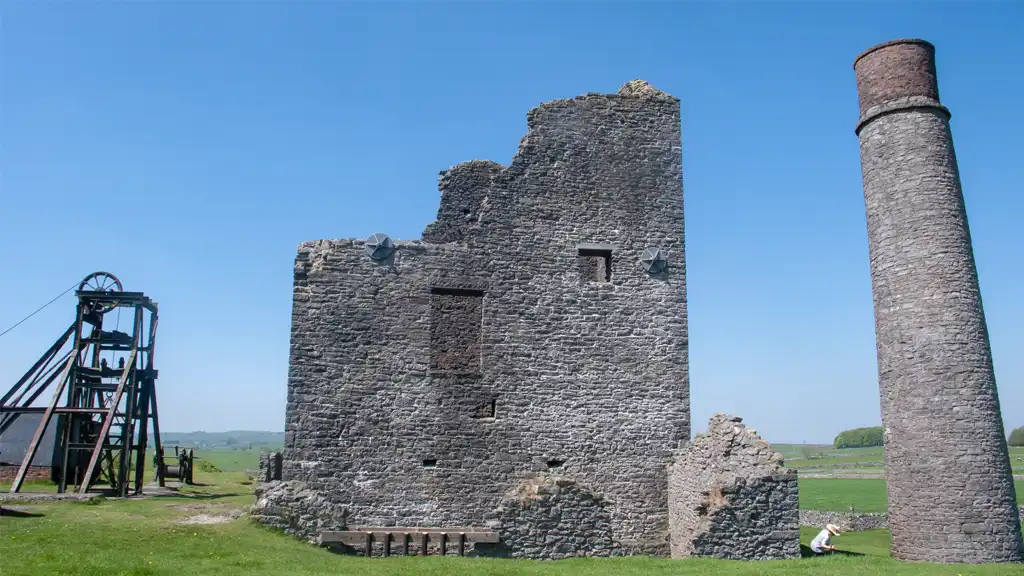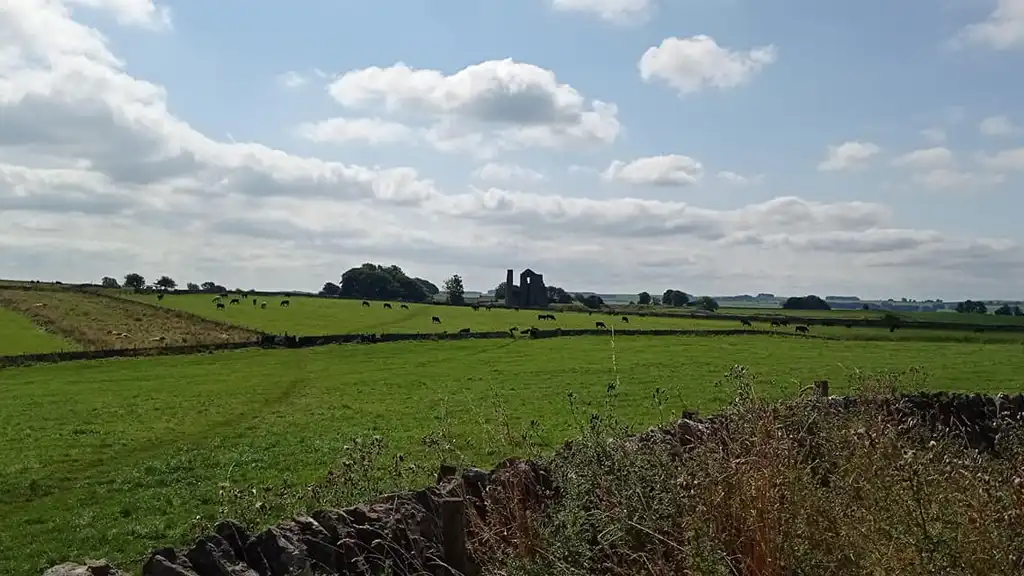The Story of Magpie Mine
Located near the village of Sheldon, Magpie Mine served as the last working lead mine in the Derbyshire ore field, operating for over 200 years.
The mine’s name likely originates from the magpie’s association with shiny objects, a fitting moniker for a mine that yielded this valuable metal. Magpie Mine reached its peak production period in the 19th century, employing a significant workforce and becoming the last working lead mine in Derbyshire by the mid-20th century.
Magpie Mine & the Widows’ Curse Legend
The mine’s history is marked by periods of prosperity as well as tragic events and disputes with neighboring mines.
The legend of the Widows’ Curse of Magpie Mine adds an intriguing and mysterious dimension to its already rich history. According to local folklore, the mine is said to be haunted and cursed by the ghosts of miners who were involved in a deadly dispute, adding an air of mystique to the site.
The curse is believed to have originated from a tragic event in 1833 when three miners from the neighboring Maypitt Mine were suffocated by fumes ignited by Magpie Miners during a dispute over the rights to the lead veins. This calamity led to a trial where 24 Magpie miners were accused of murder, but due to the challenges in identifying the culprits, they were all acquitted. The wives of the deceased miners were said to have placed a curse on the mine, which closed two years later in 1835.
The enduring legend of the curse has become intertwined with the history of Magpie Mine, adding an element of mystery and intrigue to the site. Visitors are often drawn to the mine not only for its historical significance but also for the allure of this haunting tale. The legend serves as a reminder of the hardships and tragedies that befell the miners and the lasting impact of their experiences on the landscape.
While the curse of Magpie Mine remains a captivating part of its folklore, it also reflects the human stories and conflicts that unfolded within the mining community. This legend adds depth to the historical narrative of the mine, capturing the imagination of those who visit and contributing to the enduring fascination with this remarkable site in the Peak District.
The tumultuous past of Magpie Mine reflects the harsh realities and dangers faced by those working in the mines during the height of the industry.

A Window Into the Past: Preservation Efforts at Magpie Mine
Magpie Mine serves not just as a historical landmark but also as an educational resource. By visiting the site, one can gain a deeper appreciation for the backbreaking labor involved in lead mining and the ingenuity employed by miners to extract this valuable resource. The mine also sheds light on the social and economic forces that shaped the Peak District for centuries.
Visitors to Magpie Mine can witness the well-preserved remains, including the iconic Cornish Engine House, circular chimney, and main shafts that once echoed with the sounds of industry. Guided tours and heritage open days offer a glimpse into the past, allowing visitors to appreciate the ingenuity and hardships of the miners who toiled in these underground landscapes. The preservation of Magpie Mine provides a unique window into the industrial past of the Peak District, offering an educational and immersive experience for visitors from near and far.

Lead Mining in the Peak District
The Peak District, with its picturesque landscapes and historic sites, holds a significant place in England’s industrial heritage. Magpie Mine stands as a testament to the region’s rich history of lead mining and the impact it has had on the landscape and communities.
Lead has been extracted from the Peak District for millennia. Evidence suggests Roman presence in the area as early as the first century AD, with extensive lead mining activity documented throughout the medieval period. The Peak District’s unique geology, rich in limestone veins containing lead ore deposits, made it a prime location for this industry.
Mining methods evolved over the centuries. Initially, miners followed shallow surface veins, leaving behind pockmarks and scars in the landscape, some of which are still visible today. As technology advanced, deeper shaft mining became more prevalent. Mines like Magpie employed vertical shafts with winding gear to transport miners and extracted ore. Horse-powered gins were also used in earlier times to haul materials up from the mine. The Peak District Mines Historical Society provides an excellent resource for those interested in exploring the various mining techniques used throughout the region’s history.
The lead extracted from the Peak District found its way into everything from roofing materials and pipes to pigments and ammunition. This industry not only fueled local economies but also played a significant role in shaping the built environment of Britain. The very villages and towns that sprung up around these mines became centers of commerce and innovation.

Preservation and Heritage Status
Despite the decline of lead mining in the area, the remnants of Magpie Mine and its associated structures have been diligently preserved. The site has been granted Scheduled Monument status, recognizing its historical significance and ensuring its protection for future generations. Efforts by the Peak District Mines Historical Society have played a crucial role in maintaining and showcasing the heritage of Magpie Mine.
The story of Magpie Mine and lead mining in the Peak District is a captivating tale of industry, tragedy, and perseverance. The site’s preservation stands as a tribute to the miners and the communities that relied on this industry, ensuring that their legacy is not forgotten. Magpie Mine continues to be a compelling destination, inviting visitors to explore its evocative ruins and discover the enduring significance of lead mining in the Peak District’s history.
Visiting Magpie Mine

Magpie Mine offers free public access on foot. Public Footpaths lead from numerous directions making a Magpie Mile Walk the best way to visit the site. Due to safety considerations, vehicles are not permitted on-site. Visitors are advised to wear sturdy shoes and clothing suitable for uneven terrain.
To visit by car, the shortest route to the site is from the village of Sheldon, from where a footpath leads almost directly to the mine.